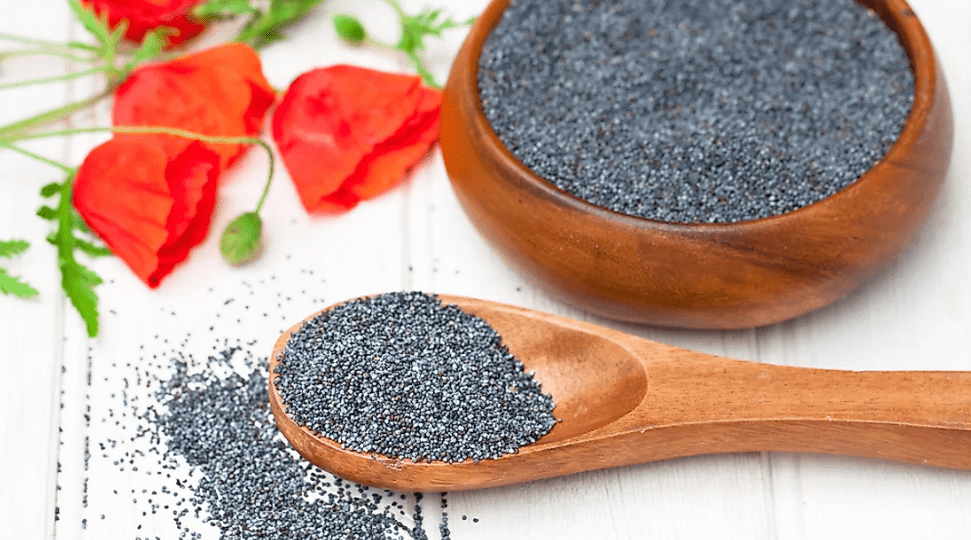
Unlock the Beauty of Nature: Planting Poppy Plant Seeds for Vibrant Blooms
Poppy plant seeds are nature’s tiny treasures, promising vibrant blooms and delicate beauty to any garden. Whether you’re a seasoned gardener or just starting out, learning how to grow poppy plant seeds can add a touch of elegance to your outdoor space. In this comprehensive guide, we’ll walk you through everything you need to know to cultivate these enchanting flowers from seed.
Table of Contents
ToggleUnderstanding Poppy Plants
1.Overview of Poppy Plants
Poppy plants are known for their vibrant and colorful flowers, making them a popular choice for gardeners looking to add a pop of color to their outdoor space. These plants come in various species, including the California poppy, Iceland poppy, and Oriental poppy, with each variety offering its own unique charm. They are relatively low-maintenance and can thrive in a variety of soil types and environmental conditions, making them a versatile addition to any garden. With the right care and attention, poppy plants can flourish and add a touch of natural beauty to your outdoor oasis.2.Cultural Significance
Poppy plants have a rich cultural significance in many different societies around the world. In some cultures, poppies are associated with remembrance and are often worn or displayed to honor those who have passed away. They are also seen as a symbol of peace and hope. In ancient mythology, poppies were often connected to stories of love, beauty, and fertility, adding a layer of meaning to these already stunning flowers. By growing poppy plants in your garden, you can connect with this cultural significance and bring a sense of tradition and history to your outdoor space. Whether you’re drawn to their symbolic meaning or simply appreciate their natural beauty, poppy plants can add a touch of depth and significance to your gardening experience.
Benefits of Growing Poppy Plants from Seeds
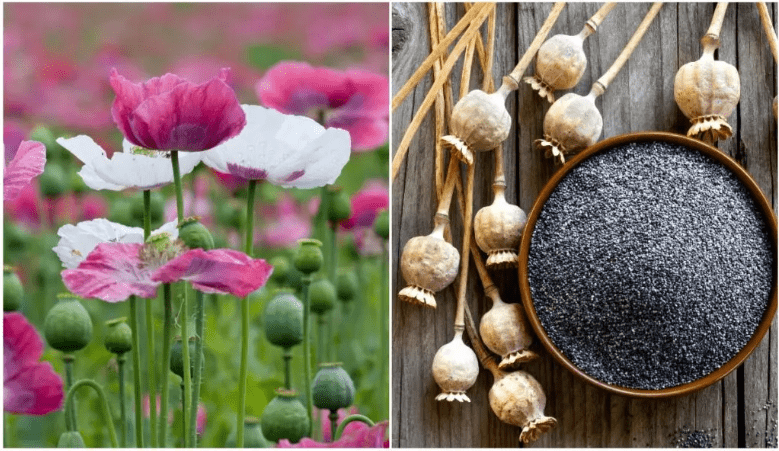
1.Cost-Effectiveness
Growing poppy plants from seeds can be a cost-effective way to add vibrant and beautiful blooms to your garden. Poppy seeds are generally affordable and widely available, making them a budget-friendly option for gardeners. Additionally, poppy plants are known for their ability to self-seed, meaning that once they are established in your garden, they can continue to propagate and create new plants without the need for additional seed purchases. This can save you money in the long run and allow you to enjoy an abundance of poppy blooms year after year.
2.Varietal Selection
When it comes to planting poppy plant seeds, it’s important to consider the variety of poppy you want to grow. There are many different types of poppies, each with its own unique color, size, and bloom time. Some popular varieties include the California poppy, the Oriental poppy, and the Iceland poppy. Before planting your seeds, take some time to research the different varieties and choose the ones that best suit your garden’s climate and aesthetic. This will help ensure that you have a successful and vibrant poppy garden.
Getting Started with Poppy Plant Seeds
1.Choosing the Right Seeds
When it comes to planting poppy plant seeds, it’s important to choose the right seeds for your garden. Consider the variety of poppy you want to grow, as there are many different types with unique colors, sizes, and bloom times. Take the time to research the different varieties and choose the ones that best suit your garden’s climate and aesthetic. This will help ensure that you have a successful and vibrant poppy garden.
2.Seed Preparation
Seed Preparation is an important step in planting poppy plant seeds. Before sowing the seeds, it’s a good idea to prepare them to improve their chances of germination. You can do this by soaking the seeds in water overnight to help soften the seed coat and promote faster germination. Another method is to scarify the seeds by lightly scratching the seed coat with sandpaper to break the tough outer layer. This can help the seeds absorb water and nutrients more easily. By taking the time to prepare your poppy seeds before planting, you can increase the likelihood of successful and healthy growth.
Planting Poppy Seeds
1.Selecting the Planting Location
The first step in planting poppy plant seeds is selecting the ideal location for them to thrive. Poppies prefer well-drained soil and full sun, so be sure to choose a spot in your garden that meets these requirements. It’s also important to consider the climate of your area and choose poppy varieties that are best suited for your specific conditions. Once you’ve selected the perfect location, it’s time to prepare the seeds for planting. Soaking the seeds in water overnight can help soften the seed coat and promote faster germination. You can also lightly scratch the seed coat with sandpaper to help the seeds absorb water and nutrients more easily. Taking the time to prepare your poppy seeds before planting can increase the likelihood of successful and healthy growth. When it’s time to actually plant the seeds, make sure to follow the instructions on the seed packet. Plant the seeds at the recommended depth and spacing, and be sure to water them regularly to keep the soil moist. With proper care and attention, you can look forward to vibrant and beautiful blooms in your garden.
2.Planting Depth and Spacing
When planting poppy seeds, it’s important to follow the recommended guidelines for planting depth and spacing. Poppy seeds should be planted at a depth of about 1/4 inch to 1/2 inch in well-draining soil. It’s best to sow the seeds in the fall or early spring to allow for natural stratification, which will help the seeds germinate. As for spacing, poppy seeds should be sown about 6 inches apart to allow for enough room for the plants to grow and thrive. Following these guidelines will help ensure successful and vibrant blooms in your garden.
Caring for Poppy Seedlings
1.Watering: Explain the importance of proper watering techniques for poppy seedlings.
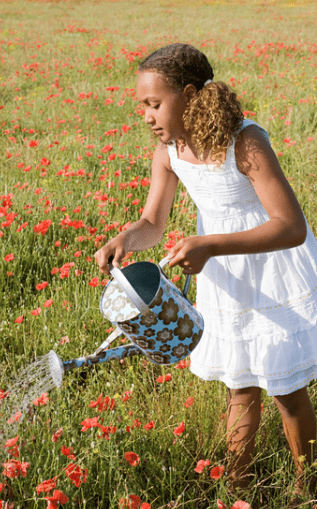
Proper watering techniques are crucial for the successful growth of poppy seedlings. It’s important to keep the soil consistently moist, but not waterlogged, as poppies don’t do well in waterlogged soil. When watering, it’s best to water the soil directly at the base of the plants to avoid getting the foliage wet, which can lead to disease. Additionally, poppies prefer slightly acidic to neutral soil, so if your soil is too alkaline, consider adding some organic matter or a small amount of sulfur to lower the pH. With proper watering and attention to soil pH, you can look forward to beautiful and vibrant poppy blooms in your garden.
2.Fertilization: Discuss the benefits of fertilizing poppy plants and recommend appropriate fertilizers.
Fertilizing poppy plants can greatly benefit their growth and overall health. It’s best to use a balanced fertilizer, such as a 10-10-10 or 12-12-12, to provide the necessary nutrients for the plants to thrive. You can apply the fertilizer in early spring when the plants are actively growing, and then again in midsummer to promote continued growth and blooming. Be sure to follow the instructions on the fertilizer packaging for application rates and methods. Additionally, organic fertilizers, such as compost or manure, can also be beneficial for poppy plants. These natural fertilizers can help improve soil quality and provide essential nutrients for the plants. By properly fertilizing your poppy plants, you can encourage healthy growth and vibrant blooms in your garden.
3.Weed Control: Offer strategies for controlling weeds around poppy seedlings.
Weed control is important when it comes to growing poppies. Weeds can compete with the poppy seedlings for water, nutrients, and sunlight, so it’s important to keep the area around the plants free of weeds. One effective method for controlling weeds is to use a layer of mulch around the poppy plants. This can help suppress weed growth and also retain moisture in the soil. You can use organic mulch, such as wood chips or straw, to cover the soil around the poppies. Just be sure to avoid covering the poppy seedlings themselves, as this can inhibit their growth. Additionally, hand-pulling weeds as soon as they appear can also help keep the area around the poppies weed-free. By implementing these weed control strategies, you can ensure that your poppy plants have the best opportunity to thrive and produce beautiful blooms in your garden.
Managing Pests and Diseases
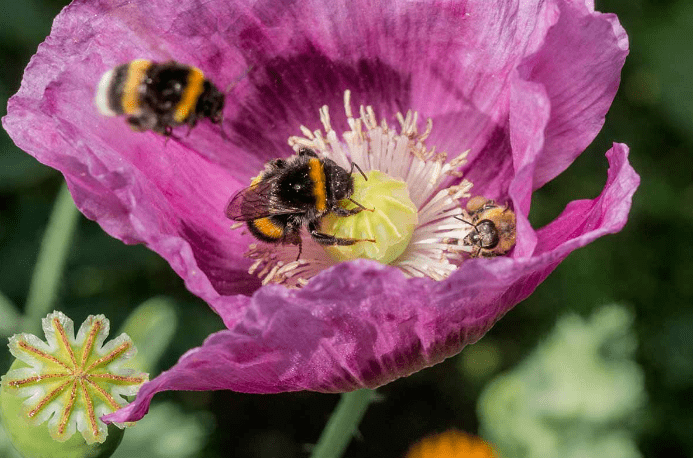
1.Common Pests: Identify common pests that may affect poppy plants and suggest organic pest control methods.
Poppy plants can be susceptible to certain pests, such as aphids, slugs, and snails. To identify if your poppy plants are affected by pests, look for signs of damage such as holes in the leaves or visible insects on the plants. One organic method for controlling pests is to introduce beneficial insects, such as ladybugs or lacewings, which eat aphids and other harmful pests. You can also try spraying the affected plants with a solution of water and soap, which can help to deter pests.
In addition to pests, poppy plants can also be vulnerable to certain diseases, such as powdery mildew or root rot. To prevent these diseases, make sure to plant your poppy seeds in well-drained soil and avoid overwatering. You can also apply a natural fungicide, such as neem oil, to help prevent and treat fungal diseases.
By being proactive in identifying and managing potential pest and disease issues, you can help ensure that your poppy plants stay healthy and vibrant. With proper care and attention, you can enjoy the beautiful blooms of poppy plants in your garden.
2.Disease Prevention: Discuss preventive measures to protect poppies from diseases such as damping-off and powdery mildew.
To prevent diseases such as damping-off and powdery mildew in your poppy plants, it’s important to take proactive measures. When planting your poppy seeds, make sure to choose a well-drained location for your garden. Overwatering can lead to the development of fungal diseases, so be mindful of how much water your plants are receiving. Additionally, avoid planting poppies too close together, as this can lead to overcrowding and increased susceptibility to diseases. If you notice any signs of disease, such as wilting or discoloration, take immediate action to treat the plants. Use natural fungicides, such as neem oil, to help prevent and treat fungal diseases. By being aware of potential disease issues and taking preventative measures, you can help ensure that your poppy plants remain healthy and vibrant.
Supporting Poppy Plants
1.Staking: Explain when and how to stake tall poppy varieties to prevent them from toppling over.
When it comes to planting poppy seeds, it’s important to take proactive measures to prevent diseases and ensure the success of your plants. One important step is to choose a well-drained location for your garden to prevent diseases such as damping-off and powdery mildew. Overwatering can lead to the development of fungal diseases, so be mindful of how much water your plants are receiving. Additionally, avoid planting poppies too close together, as this can lead to overcrowding and increased susceptibility to diseases. If you notice any signs of disease, such as wilting or discoloration, take immediate action to treat the plants. Natural fungicides, such as neem oil, can be used to help prevent and treat fungal diseases. Another important aspect of growing poppies is staking tall varieties to prevent them from toppling over. This can be done by gently tying the plants to stakes as they grow. By being proactive in preventing diseases and providing support for your poppy plants, you can help ensure that they remain healthy and vibrant, and that you can enjoy beautiful blooms in your garden.
Harvesting Poppy Seeds
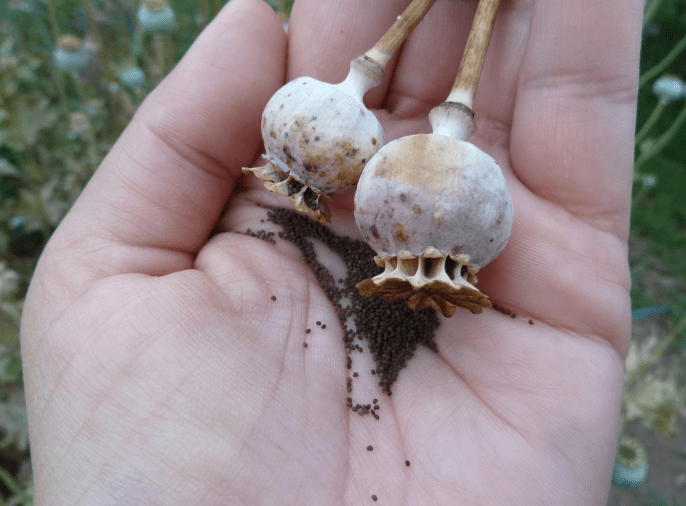
Can be a rewarding and enjoyable process. Once the poppy flowers have bloomed and the petals have fallen off, the seed pods will begin to ripen. To harvest the seeds, wait until the pods have turned a light brown color and the vents at the top of the pods have begun to open. At this point, you can gently shake the pods to release the seeds into a container. Alternatively, you can snip the pods from the plant and allow them to dry further in a warm, well-ventilated area before extracting the seeds.
It’s important to store your harvested poppy seeds in a cool, dry place to maintain their viability. You can use the seeds for planting in the next growing season or incorporate them into your culinary endeavors. Poppy seeds are often used in baking and cooking, adding a nutty flavor and texture to dishes.
Overall, growing and harvesting poppy seeds can be a wonderful addition to your gardening experience, and the vibrant blooms and versatile seeds can bring beauty and flavor to your life.
Creative Uses for Poppy Seeds
1.Culinary Uses: Explore the various ways poppy seeds can be used in cooking and baking.
Poppy seeds have a variety of culinary uses and can be used in both savory and sweet dishes. They can be sprinkled on top of breads, muffins, and cakes to add a nutty flavor and crunchy texture. Poppy seeds are also commonly used in salad dressings, stir-fries, and as a topping for pasta. In addition to their delicious taste, poppy seeds are also a good source of nutrients, including healthy fats, fiber, and essential minerals like calcium and phosphorus. So, not only are poppy seeds tasty, but they can also contribute to a nutritious diet. Whether you’re a seasoned cook or new to the kitchen, adding poppy seeds to your culinary repertoire can help you create flavorful and healthy meals. So, next time you’re in the kitchen, consider experimenting with poppy seeds to enhance the taste and nutritional value of your dishes.
2.Crafting and Decor: Discuss how poppy seeds can be incorporated into craft projects and home decor.
In addition to their use in gardening, poppy seeds can also be incorporated into craft projects and home decor. The small, black seeds can be used to add texture and visual interest to various crafts. For example, you can use poppy seeds to create unique artwork or add them to homemade candles for a decorative touch. They can also be used to create textured surfaces on items like picture frames or decorative boxes. Additionally, poppy seeds can be used to make natural dyes for fabric or as a decorative element in potpourri or homemade soaps. The possibilities for using poppy seeds in crafting and home decor are endless, so don’t hesitate to get creative and experiment with different ways to incorporate these versatile seeds into your projects.
In conclusion, planting poppy plant seeds can bring vibrant and beautiful blooms to your garden, adding a touch of natural beauty to your outdoor space. By following the step-by-step instructions and tips provided in this article, you can successfully grow poppy plants and unlock the beauty of nature in your own backyard. Whether you’re a seasoned gardener or new to planting, the process of growing poppy plants can be a rewarding and enjoyable experience. So, get your hands dirty and start planting those poppy seeds for a stunning garden display!
Frequently Asked Question
The best time to plant poppy seeds is in the early spring or late fall, when the soil is cool and moist.
Poppy seeds should be planted about 1/8 inch deep in the soil.
Poppies thrive in full sunlight, so it’s best to plant them in an area with at least 6 hours of direct sunlight per day.
Poppies prefer well-drained soil, so it’s important not to overwater them. Water them when the top inch of soil feels dry to the touch.
Poppy seeds typically take 7-21 days to germinate, depending on the variety and growing conditions
Poppies are relatively low-maintenance, but you should deadhead the flowers to encourage more blooms and prevent self-seeding.
Yes, poppies can be grown in containers as long as the container has good drainage and the plants receive enough sunlight.
While poppies are generally safe, it’s important to note that some varieties of poppies can be toxic if ingested. It’s best to keep them out of reach of pets and children.
